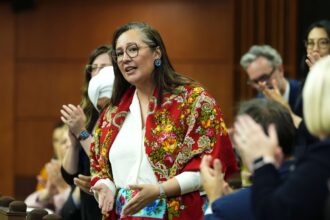The federal government’s approval of a pivotal natural gas pipeline through northern British Columbia marks a watershed moment in Canada’s complex relationship with energy development and Indigenous rights. On Tuesday, Ottawa granted the environmental green light to the Prince Rupert Gas Transmission project, potentially unlocking billions in economic benefits while raising questions about the nation’s climate commitments.
The 900-kilometer pipeline, backed by TC Energy Corp, will transport natural gas from northeastern B.C. to the proposed Cedar LNG facility near Kitimat. What distinguishes this project is its unique partnership with the Nisga’a Nation, whose leadership has consistently championed the development as a path toward economic sovereignty.
“This approval represents a critical juncture in Canada’s evolving approach to reconciliation through economic partnership,” said Eva Clayton, President of the Nisga’a Lisims Government, in a statement following the announcement. “Our nation has worked tirelessly to ensure this project aligns with both our economic aspirations and our sacred responsibility as stewards of the land.”
The federal approval comes with 25 legally binding conditions, including requirements for extensive environmental monitoring and protections for sensitive waterways along the route. According to Natural Resources Canada, these conditions were developed through consultation with affected Indigenous communities and environmental experts.
However, the decision has ignited fierce debate within Indigenous communities along the proposed route. While the Nisga’a leadership celebrates the economic potential—estimating up to 800 construction jobs and millions in annual revenue—other Indigenous voices express profound concerns about potential impacts on traditional territories and waterways.
The pipeline approval arrives at a politically charged moment, with Prime Minister Justin Trudeau’s government navigating increasing pressure to balance climate commitments with economic growth. Canada has pledged to reduce greenhouse gas emissions by 40-45% below 2005 levels by 2030, while simultaneously supporting resource development projects that Indigenous partners have embraced.
Environmental organizations, including the Sierra Club BC, have criticized the approval as inconsistent with climate goals. “This decision effectively locks in decades of fossil fuel infrastructure at precisely the moment when science demands rapid decarbonization,” said climate policy analyst Jens Wieting in response to the announcement.
The project faces additional hurdles before construction can begin. TC Energy must secure additional permits and finalize investment decisions amid volatile global energy markets. Industry analysts note that the pipeline’s ultimate viability depends on international demand for Canadian LNG, particularly from Asian markets seeking alternatives to coal.
British Columbia’s provincial government has welcomed the federal approval, highlighting potential provincial economic benefits estimated at $2.8 billion during construction alone. “This project represents the type of responsible resource development that can coexist with our climate commitments,” said Premier David Eby at a press conference in Victoria.
The Nisga’a pipeline decision reflects Canada’s broader struggle to reconcile resource development with both climate commitments and Indigenous rights. Unlike previous pipeline controversies, this project has emerged from Indigenous-led economic development initiatives, challenging conventional narratives about resource politics in Canada.
As Canada continues navigating this complex terrain of energy policy, Indigenous relations, and climate action, the fundamental question remains: Can the nation successfully balance its resource-based economic heritage with its climate commitments while genuinely advancing reconciliation through meaningful economic partnerships with Indigenous nations?
























